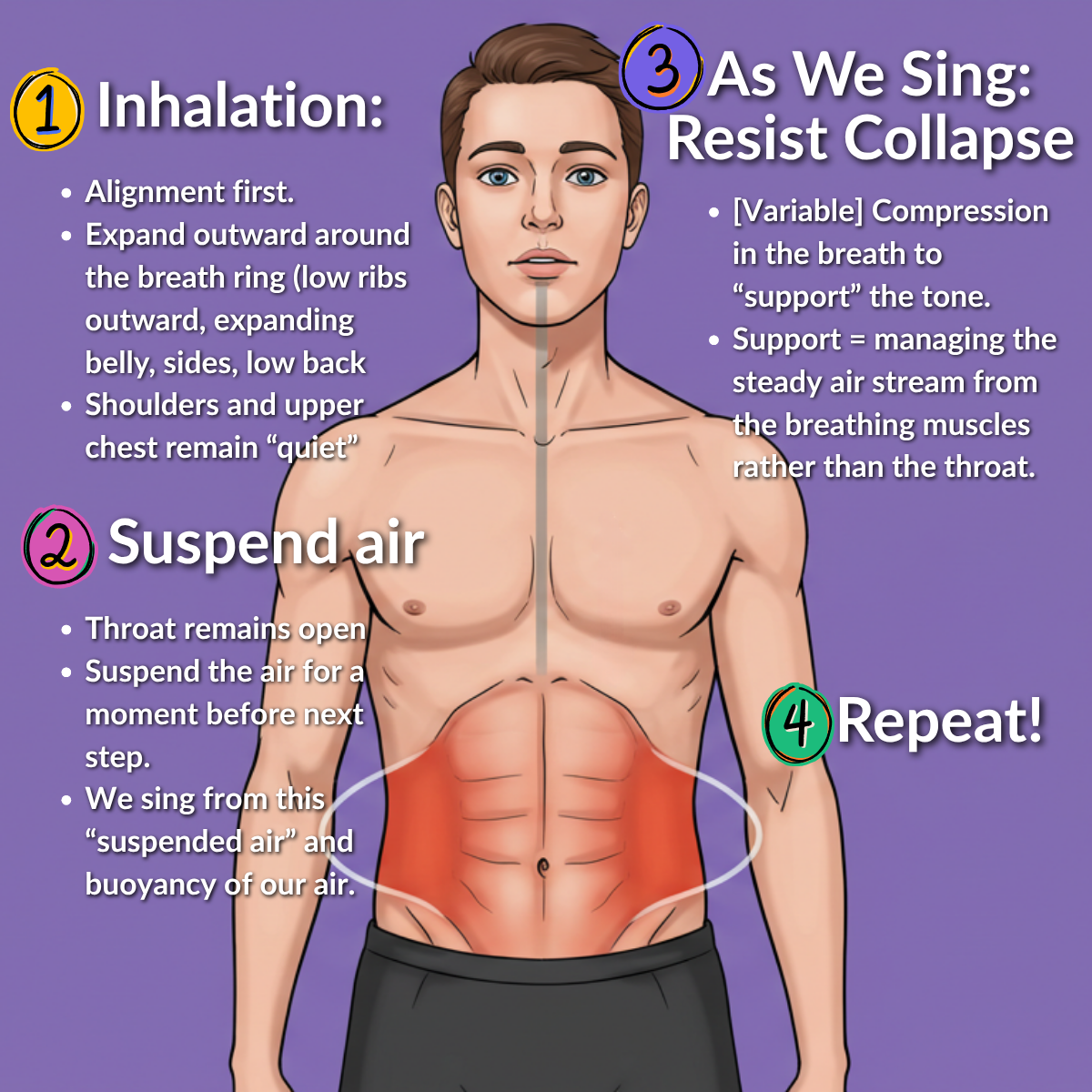Vocal Freedom: The Power of Proper Alignment in Singing
At the core of a strong and healthy voice lies the principle of alignment. It’s not about rigid posture or holding yourself in uncomfortable positions. Instead, think of it as setting up your body in a way that supports free and easy breathing, allowing your voice to flow out without strain or restriction.
Practical Steps for Better Alignment
Grounding Your Stance
Imagery:
- Tree Roots: Imagine your feet growing roots into the floor, extending deep into the earth beneath you. This visualization not only helps in achieving a sense of stability but also in feeling a connection to the ground, providing a solid foundation from which your voice can rise.
- Magnetic Feet: Picture the soles of your feet as magnets, firmly attracted to the metal core of the earth. This image can help solidify the feeling of being anchored, yet flexible and ready to move with your breath and voice.
Exercises:
- Weight Shifting: Gently shift your weight from one foot to the other, then find the midpoint where your weight is evenly distributed. This helps you find balance and stability in your stance.
- Heel-to-Toe Rocking: Slowly rock forward onto your toes and back onto your heels. This awakens the muscles in your feet and legs, enhancing your sense of grounding.
- Foot Flexing: While standing, lift your toes off the ground and then gently place them back down. This exercise increases awareness in your feet, reinforcing a grounded stance.
Releasing Shoulder Tension
Imagery:
- Waterfall Shoulders: Visualize a waterfall flowing down from your shoulders, carrying away all the tension. This imagery encourages a natural relaxation and downward release of the shoulders.
- Snow Melting: Picture the tension in your shoulders as snow melting under the warm sun, transforming from solid to liquid, and then evaporating away. This helps in releasing tightness and promoting ease.
Exercises:
- Shoulder Circles: Slowly rotate your shoulders in a circular motion, first forward then backward, emphasizing a full range of motion to release stiffness.
- Shoulder Shrugs: Lift your shoulders up towards your ears, hold for a moment, and then release them down. Repeat several times to relieve built-up tension.
- Arm Swings: Let your arms hang loosely by your sides, then gently swing them back and forth. This movement helps to loosen the shoulders and upper back.
Aligning the Head and Neck
Imagery:
- Balloon Head: Imagine a balloon attached to the top of your head, gently lifting your skull upwards, elongating your neck without straining.
- Book Balance: Picture balancing a book on your head. This image encourages the head to align directly over the spine, promoting a natural, upright posture.
Exercises:
- Nodding Yes: Gently nod your head as if saying “yes,” focusing on the smooth movement of the neck. This helps find the natural pivot point and encourages relaxation.
- Turning No: Slowly turn your head from side to side as if saying “no,” keeping the movement fluid. This increases neck flexibility and alignment awareness.
- Head Tilts: Tilt your head to one side, bringing your ear towards your shoulder, then switch sides. This stretch releases neck tension and aids in alignment.
Encouraging Spinal Length
Imagery:
- String of Pearls: Imagine your spine as a string of pearls, each vertebra a pearl, hanging straight and aligned, with each pearl perfectly stacked on the one below.
- Rising Steam: Visualize steam rising in a straight line, symbolizing your spine growing taller and straighter, effortlessly lifting you up.
Exercises:
- Wall Angels: Stand with your back against a wall, arms raised like wings. Slide your arms up and down, maintaining contact with the wall, to promote spinal alignment and shoulder mobility.
- Cat-Cow Stretch: On hands and knees, alternate between arching your back upwards and dipping it downwards. This movement enhances spinal flexibility and awareness.
- Pelvic Tilts: Lying on your back with knees bent, gently tilt your pelvis forward and back. This exercise helps engage the lower back and supports spinal alignment.
Breathing for Vocal Support
Imagery:
- Expanding Balloon: Envision your torso as a balloon, expanding in all directions (front, back, sides) as you inhale, and gently deflating as you exhale. This promotes full, diaphragmatic breathing.
- Waves on the Shore: Picture your breath as waves gently rolling in and out on the shore, a smooth and natural rhythm that supports your voice without force.
Exercises:
- Sighing Releases: Inhale deeply and then sigh out, allowing your breath to escape naturally. This helps release tension and facilitates a relaxed breathing pattern.
- Hissing Exercise: Take a deep breath in and then hiss out slowly, controlling the release of air. This builds control and awareness of the breath, crucial for supporting the voice.
- Rib Cage Expansion: Place your hands on your ribs. As you inhale, feel your ribs expanding outwards; as you exhale, feel them returning. This exercise enhances awareness of breath support and capacity.
Incorporating these imagery ideas and exercises into your daily practice can help you achieve a more aligned, relaxed posture, providing a solid foundation for free and healthy vocal production. Remember, the journey to optimal alignment is personal and ongoing, so be patient with yourself and celebrate the progress you make along the way.
A Note on Sitting
Many singers perform seated, especially in studio settings or during practice. The principles of alignment don’t change. Sit at the edge of your chair to prevent slouching, keep your feet flat on the ground, and maintain the natural curve of your spine. Remember, whether standing or sitting, the goal is to keep your body aligned in a way that supports free, unhindered vocal expression.
Bringing It All Together
Improving your alignment for singing is a journey of self-awareness and adjustment. It’s not about achieving a ‘perfect’ posture but finding a balance that allows your voice to emerge effortlessly and powerfully. Regularly practicing these exercises and being mindful of your body’s posture can lead to noticeable improvements in your vocal performance.
Remember, every singer’s body is different, so what works best for you might be a slight variation on these guidelines. Pay attention to how changes in your alignment affect your voice, and don’t hesitate to adjust based on what feels right and sounds best. Here’s to your vocal journey, grounded in a foundation of optimal alignment for peak performance.






Leave a Reply